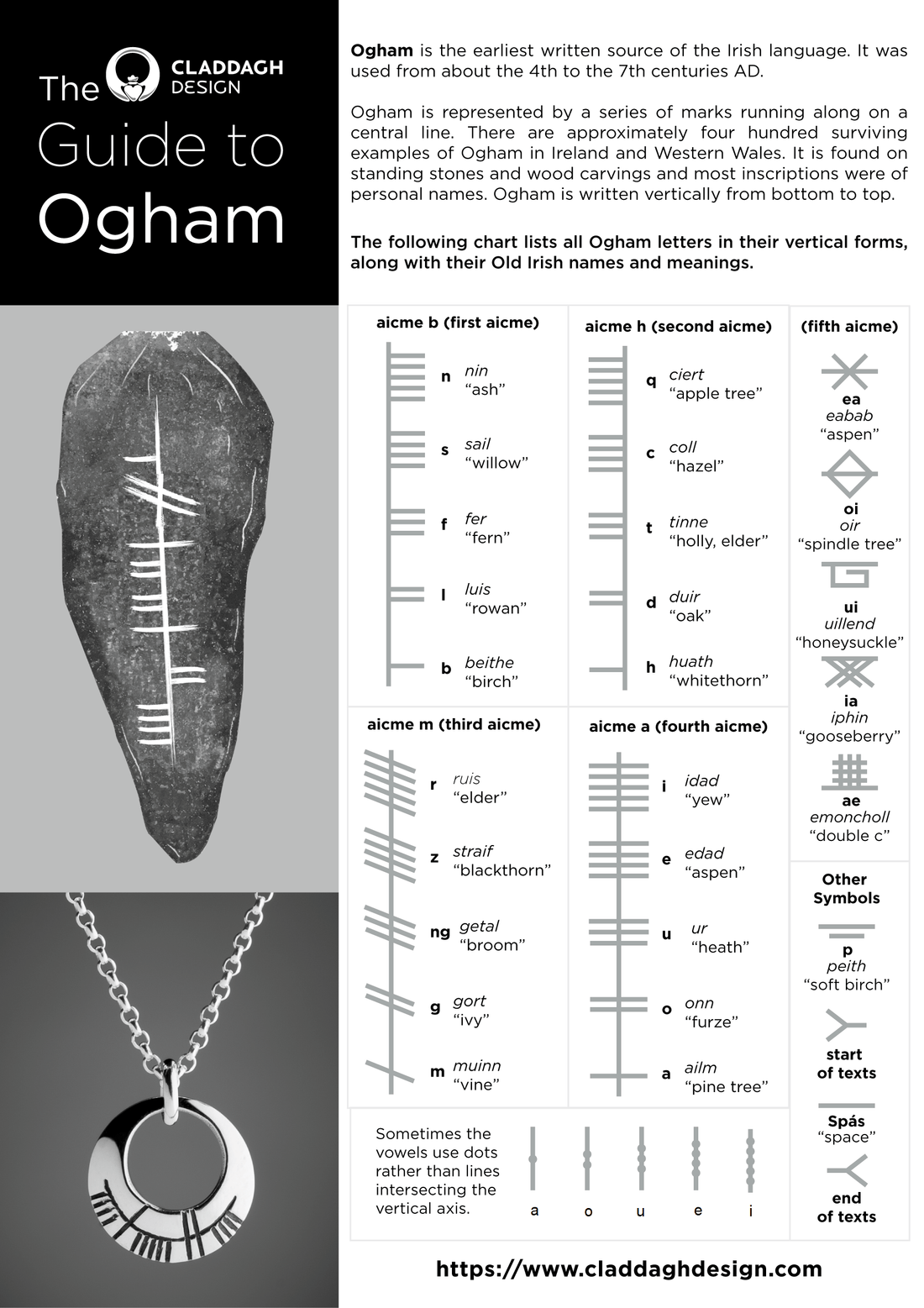Ogham is an ancient Irish alphabet. Each letter represented by a mark along one central line. Dating back to the 4th century, it is the earliest form of writing to be found in Ireland. Examples left by our ancestors can still be seen in Ireland and Britain to this day. If you've found your way to our Guide to the Ogham Alphabet, we're guessing you already know a little about this intriguing language. But what is it really about and how was it structured? Read on to find out more! You may also like to test out your translation skills using our useful guide to reading this ancient script.
How to Read Ogham

Below is a simple example to illustrate how Ogham is written. Each character is formed by a series of strokes. We read these from the bottom to the top along the central line. So if we wanted to write the name Tom, this is how it looks

Primarily found in Ireland and Western Wales, each letter is associated with a tree or plant. Ogham is believed to have been mainly written in Old Irish. For this reason, we first translate to the Irish language before inscribing messages and initials on our handcrafted jewelry.
Test Your Ogham Translation Skills
Using the above guide, you should now be able to translate this Ogham inscription on our Men's Ogham Pendant. The phrase is inscribed in Irish (Gaelic) so it may not look familiar to you.
If you'd like to create an original Ogham necklace or ring, browse our collection of Ogham Jewellery. As all of our designs are handmade, any piece can be personalized with your choice of inscription on request.
Skip ahead to uncover it over here on Ogham necklace for men in our online store.
For those of you with an interest in Ogham, you may enjoy browsing our handcrafted Ogham jewelry collection.
At Claddagh Design, Ogham translations are based on research conducted by reputable sources on the Ogham language. While every reasonable effort is made to ensure that the information provided is comprehensive and accurate, due to the historic nature of this ancient script, the accuracy or reliability of content or information provided and any use thereof is solely at the user's risk.

